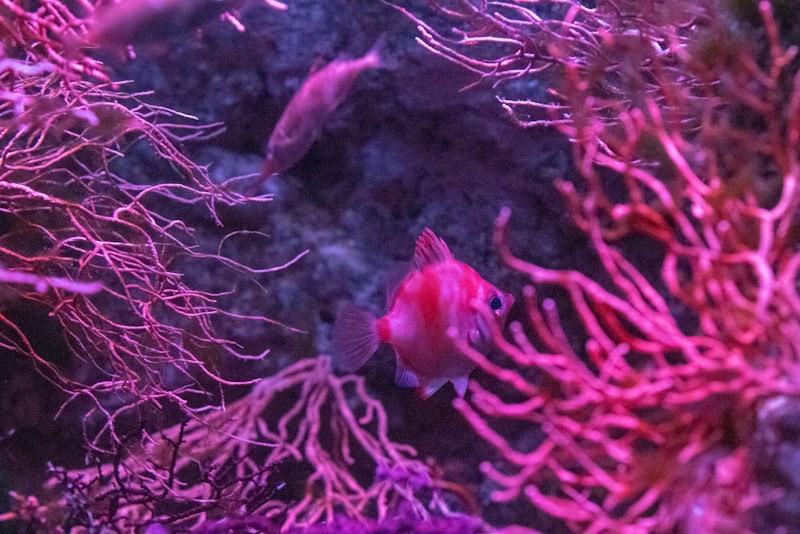
Mangroves are hardy plants that thrive in diverse environments, from saltwater swamps to brackish lagoons. But when it comes to keeping them in an aquarium, there’s one factor that can throw them off balance: pH fluctuations.
Let’s dive into how pH impacts your mangroves and what you can do to keep these resilient plants thriving in your aquarium.
Why does pH Matter for Mangrove Plants?
pH is a measure of how acidic or alkaline your water is. For mangroves, which naturally live in varying conditions, you might think they can handle anything. But in an aquarium, the controlled environment means they can be more sensitive to pH changes.
The Ideal pH Range
Mangroves typically prefer a pH range of 6.5 to 8.5. This wide range reflects their adaptability. However, consistency is key. Sudden swings outside of this range can stress your mangroves, affecting their growth and overall health.
Good pH: ✅ Steady pH between 6.5 and 8.5
Bad pH: ❌ Frequent pH swings below 6.5 or above 8.5
Signs Your Mangroves Are Struggling with pH Fluctuations
Recognizing when pH is causing problems for your mangroves can help you take action before it’s too late. Here are some common signs:
Yellowing Leaves
One of the first signs of stress in mangroves is yellowing leaves. While this can result from several factors, fluctuating pH is a common cause. When the pH drops too low, it can affect nutrient uptake, leading to deficiencies that manifest in yellowing leaves.
Stunted Growth
If your mangroves aren’t growing as expected, pH could be the culprit. Mangroves need a stable pH to absorb nutrients properly. When the pH swings, it can stunt their growth, leaving you with plants that don’t thrive.
Root Rot
Another sign of pH issues is root rot. Mangroves have specialized roots that allow them to filter out salt and thrive in various conditions. But when the pH is off, these roots can become susceptible to rot, a serious issue that can ultimately kill the plant.
Healthy Roots: ✅ Strong, white, and firm
Unhealthy Roots: ❌ Brown, mushy, and weak
🛑 For more tips on avoiding common pitfalls, check out our blog post on Common Mistakes to Avoid When Growing Red Mangroves in Aquariums.
How to Stabilize pH in Your Aquarium
Now that you know the signs of pH trouble, let’s talk about how to prevent it.
Test Your Water Regularly
The first step in managing pH is knowing what it is. Regular testing is essential. Use a reliable pH test kit to monitor your water at least once a week. This allows you to catch fluctuations early and take corrective action before they affect your mangroves.
Use Buffer Solutions
If your water’s pH tends to drop or spike, consider using a buffer solution. Buffers help maintain a stable pH by neutralizing acids or bases in the water.
Be sure to choose a buffer that’s safe for both plants and fish if you have them in your tank.
Pros of Buffer Solutions: ✅ Helps maintain stable pH, easy to use
Cons of Buffer Solutions: ❌ Can be expensive, may require frequent dosing
Perform Regular Water Changes
Water changes are a simple but effective way to maintain stable pH. By regularly replacing part of your tank’s water, you dilute any substances that might be causing pH to fluctuate.
Aim for a 10-20% water change every week to keep conditions stable.
Good Water Change: ✅ Weekly 10-20% changes
Bad Water Change: ❌ Infrequent or large changes that shock the system
pH and Other Water Parameters
pH doesn’t exist in isolation. It’s interconnected with other water parameters like salinity, hardness, and nutrient levels. To truly stabilize pH, you need to manage these other factors as well.
Salinity
Mangroves can tolerate varying salinity levels, but drastic changes can affect pH. If you’re adding salt to a brackish tank, do it gradually to avoid spikes that could harm your plants.
Hardness
Water hardness refers to the concentration of minerals like calcium and magnesium in your water. High hardness can buffer pH, preventing fluctuations, but too much can make it hard to adjust pH if needed. Aim for a balanced level, and adjust it slowly if necessary.
Balanced Hardness: ✅ Prevents sudden pH drops
Unbalanced Hardness: ❌ Can make pH difficult to manage
A Personal Anecdote on pH Management
When I first started growing mangroves in my home aquarium, I didn’t pay much attention to pH. I thought they were tough enough to handle anything. But after a few weeks, I noticed the leaves turning yellow and the roots looking unhealthy.
That’s when I started testing the pH regularly and discovered it was all over the place! A buffer solution and regular water changes quickly became my best friends, and soon enough, my mangroves were back to their vibrant selves.
This experience taught me the importance of consistency in water parameters. Even the hardiest plants need a stable environment to thrive.
Managing pH in your aquarium is crucial for the health of your mangroves. By keeping the pH stable, you’ll ensure that your plants can grow strong and healthy. Regular testing, using buffers when necessary, and performing consistent water changes are all key strategies to maintain the ideal environment.
How Do I Choose My Very First Plant?
So you have learned about the incredible benefits of adding mangrove plants to your tank, but you still don’t know which exact plant to add to your specific tank size?
Don’t worry, because we’ve created an easy Step-by-Step guide to help you with your selection process.
Click the button below to find out which plant is perfect for your aquarium.

 Cart is empty
Cart is empty 
